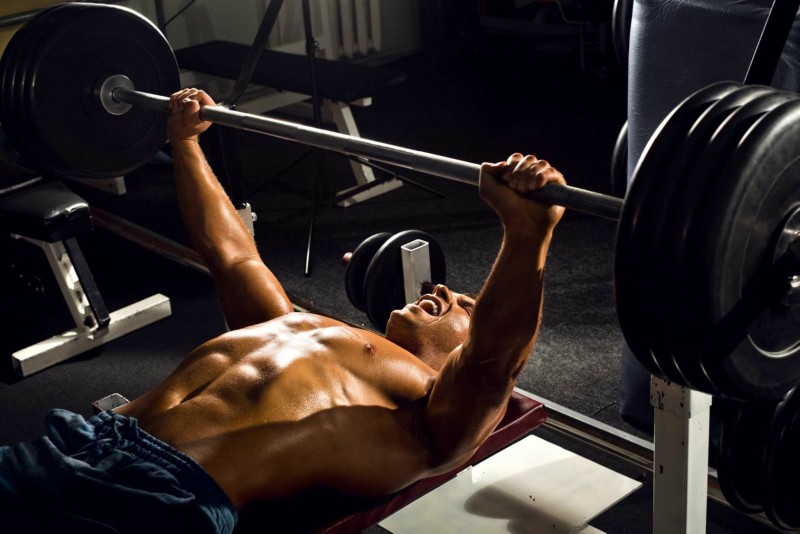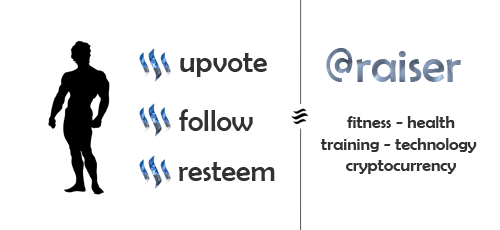Hypertrophy and Strength | The Error of Lifting Slowly

Photo: Source
Hello Steemians! Today I want to share with you the most frequent mistakes that people make when it comes to working hypertrophy and strength in the gym. This is what you see when I train in commercial gyms and when I see videos of people that I follow on Instagram or YouTube. Although it may not seem like it, in reality it is a mistake that many people usually commit and are not aware of it.
This error is related to the speed of execution in the concentric phase, that is, we do not lift the weight at the maximum possible speed. Usually, this error is committed mostly, people who work frequently in hypertrophy and not so much strength or power specifically. This is because when a person works on the specific form of hypertrophy, he is usually focused on working with loads below the minimum, unless he has a tendency to the maximum possible speed.
We have to distinguish and differentiate two concepts that are very important and easy to define. First of all, we have to understand what an unintentional slow speed is, and a slow speed that is intentional. For example, if in bench press we do staggered series in which progressively we increase the load, logically each series will be more difficult and the speed at which we will raise the bar in concentric phase will be less and less. In this case, the slow speed would be unintentional.
On the other hand, the intentional slow speed happens, as I explained earlier, with people who work the hypertrophy in a concrete way and, therefore, work with sub-maximum loads, quite far from their 1RM. These people tend to think that they need to concentrate their muscle movement as much as possible, but they are not really working at the right speed with which they would have to execute that load. For example, it is very common to observe how the pulls are performed with a very slow concentric phase, and the eccentric phase is also very slow, as in many other exercises.
This is not effective either for strength or for hypertrophy, or practically for nothing. Each percentage of the 1RM has its maximum speed, and the intention to reach that speed is what is going to make us progress. The fact that you work in ranges of hypertrophy with a concentric speed that is not adequate, that is, slower than the speed required by that load, is not really going to be a benefit.
It is true that in this way you are recruiting more oxidative fibers (type 1 fibers), but these fibers have the least potential for hypertrophy. In addition, at the level of motor units, you are downloading low frequency instead of high frequency. So, you will not get the maximum hypertrophy, because mainly the most hypertrophied fibers are type 2 fibers, and also you will not substantially improve your strength, because as I have explained, the motor units are discharging a low frequency.
To conclude, I want you to stay with these concepts, intentional speed and unintentional speed. One depends on us, that is, how fast we want to move the load, and the other depends on the weight, as long as we lift at the maximum possible speed.
As you can see are very simple concepts and easy to assimilate, however they are very common mistakes and that practically everyone commits in gyms. So if you see that anyone is working the hypertrophy, or is working strength and does not try to accelerate as much as possible the bar with any load, it is convenient that you tell it because in that way it is limiting your progress a lot, and in the end the The sum of all these limitations implies a great long-term limitation.
References
- Badillo JJG & Ayestarán EG. Fundamentos del entrenamiento de la fuerza: Aplicación al alto rendimiento deportivo (Vol. 302). Madrid: Inde; 2002.
- Campos GE, Luecke TJ, Wendeln HK, Toma K, Hagerman FC, Murray TF, Staron RS et al. Muscular adaptations in response to three different resistance-training regimens: specificity of repetition maximum training zones. Eur J Appl Physiol, 2002; 88(1-2), 50-60.
- Cronin J & Sleivert G. Challenges in understanding the influence of maximal power training on improving athletic performance. Sports Med, 2005; 35(3), 213-234
- González-Badillo JJ & Sánchez-Medina L. (2010). Movement velocity as a measure of loading intensity in resistance training. Int J Sports Med, 31, 347-352.
- Izquierdo M, Gonzalez-Badillo JJ, Hakkinen K, Ibanez J, Kraemer WJ, Altadill A et al. Effect of loading on unintentional lifting velocity declines during single sets of repetitions to failure during upper and lower extremity muscle actions. Int J Sports Med, 2006; 27(9), 718-724.
- Keogh JW, Wilson GJ & Weatherby RE. A Cross-Sectional Comparison of Different Resistance Training Techniques in the Bench Press. J Strength Cond Res, 1999; 13(3), 247-258.
- Pareja-Blanco F, Rodríguez-Rosell D, Sánchez-Medina L, Gorostiaga EM & González-Badillo JJ. Effect of movement velocity during resistance training on neuromuscular performance. Int J Sports Med, 2014; 35(11), 916-924.


Este Post ha recibido un Upvote desde la cuenta del King: @dineroconopcion, El cual es un Grupo de Soporte mantenido por 5 personas mas que quieren ayudarte a llegar hacer un Top Autor En Steemit sin tener que invertir en Steem Power. Te Gustaria Ser Parte De Este Projecto?
This Post has been Upvote from the King's Account: @dineroconopcion, It's a Support Group by 5 other people that want to help you be a Top Steemit Author without having to invest into Steem Power. Would You Like To Be Part of this Project?
You got a 0.92% upvote from @upme requested by: @raiser.
Send at least 2.5 SBD to @upme with a post link in the memo field to receive upvote next round.
To support our activity, please vote for my master @suggeelson, as a STEEM Witness